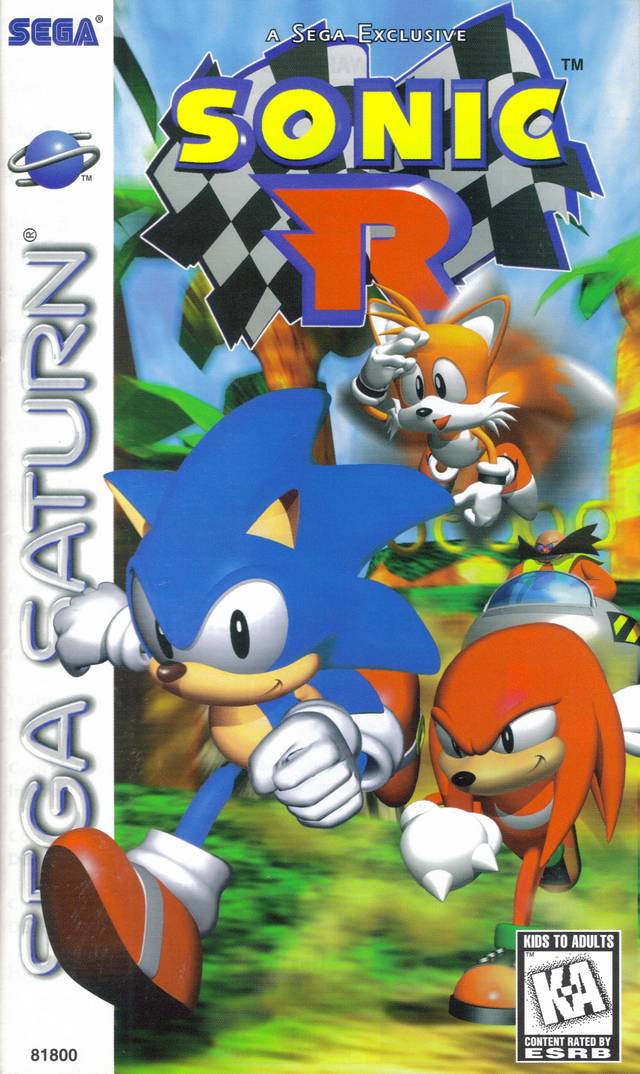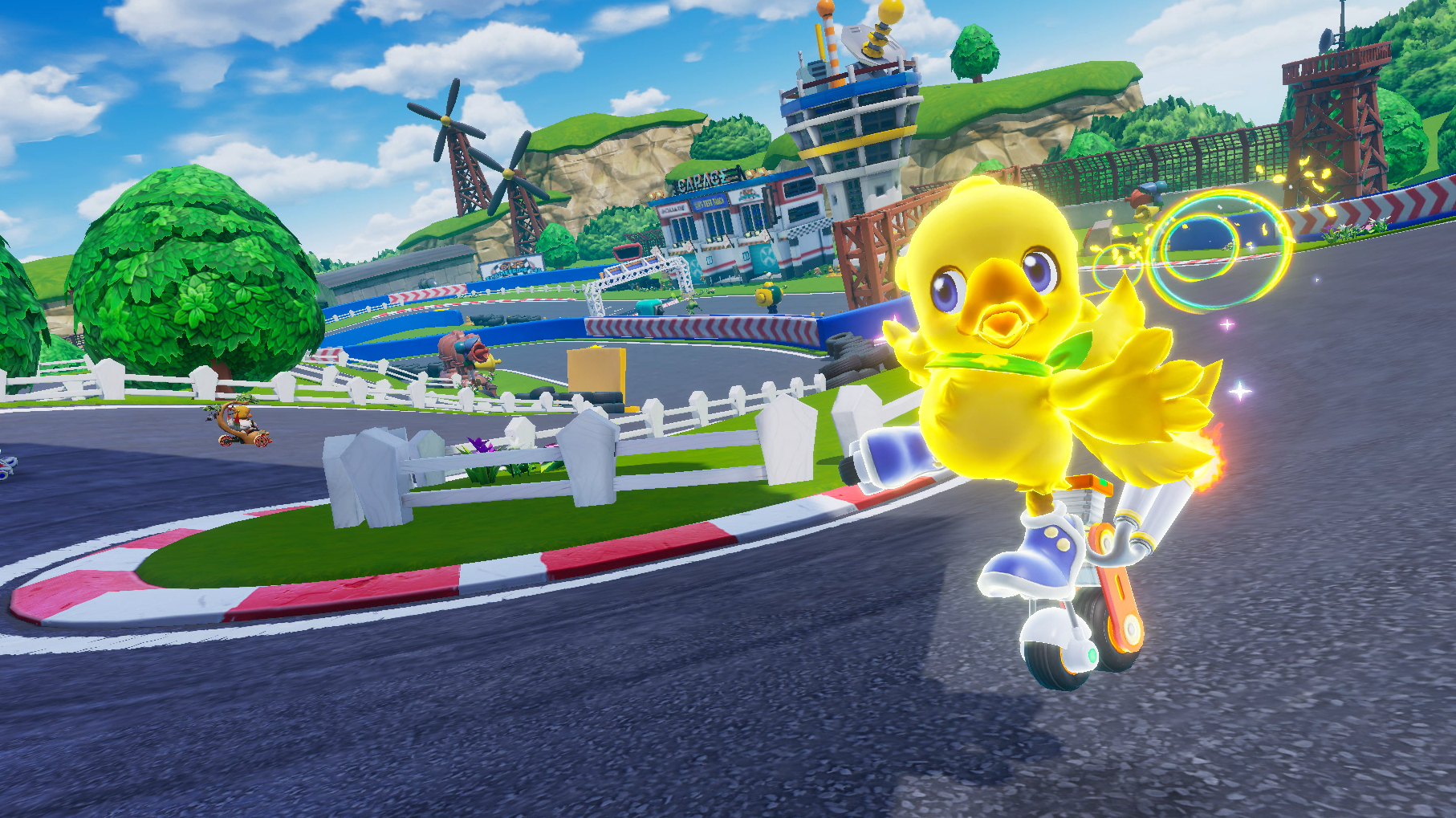

Upgrading to the full release gets you a larger suite of options, a story campaign and more characters. At release, there’s a “lite” version that can join local multiplayer and participate in the 64-player GP mode.

The structure of Chocobo GP is a bit strange, making us think that it may have moved back and forth between a paid release and a free-to-play title in development. (This can, and should, be addressed in a patch. It’s weird! And something you might expect from a multiplatform port designed for a different gamepad layout. Chocobo GP offers three configurations in the options menu, but all of them map acceleration to the Switch’s tiny shoulder bumpers and none of them let you really utilize the much larger and more comfortable triggers instead. The main element holding it back? Control options. The driving feels a bit floaty at times, but it’s tolerable enough. And it does feel like it could benefit from locales that were a bit more on-the-nose references to classic Final Fantasy. So how is the driving? And how are the tracks? The answer is… fine? Chocobo GP recycles environments to provide a few variations of tracks, a reasonable use of development resources that inevitably leads things to feel a bit samey. Even on a lower difficulty, you can often lead the whole race only to finish 7th because of the severity of attacks and recovery time afterward. And the well-known Mario Kart phenomenon of a near-endless barrage of items that hit you at the finish line and steal away your victory? Yeah, Chocobo GP has that too, and it in many ways feels worse. Like those portals? Sometimes they’ll orient poorly and shoot you right off the course or into walls, and you end up further behind than you were. This is an interesting idea! And there’s a degree to which it works, though it could use some fine-tuning. Character super attacks can put boosts on the board for others, too. For example, color-coded red and blue portals warp you forward on the course, while sometimes allowing others to follow and occasionally catching someone off-guard in front of you and teleporting them the other direction. They often benefit players behind you as well as yourself when you use them. The selection of attacks does its best to provide rubberbanding without a blue shell.

(Bronze is just random, but hey, it’s something!) Gold is usually the best, giving you two of the same element, but silver guarantees it’ll match your last type and is a better choice sometimes. Instead of item boxes, the color-coded pickups come in bronze, silver and gold.

The Magicite item system can be an interesting layer to manage. And the game’s first “season” additions, Cloud and Squall, show that they’re sticking to this time period for a while yet. Its cast includes Vivi and Steiner, among mainstay creatures like Moogles. Its items are Magicite, with effects that grow if you collect more of the same type before firing. And that PS1-era Final Fantasy influence is clear. A sequel to original PlayStation release Chocobo Racing, Chocobo GP builds on that game’s foundation. But more often, a game falls flat despite its best efforts. It’s doable, for sure! We’ve seen that over the years, with releases like Blur and Sonic & All-Stars Racing Transformed giving Nintendo a real run for its money. And… simple? Mario Kart games often feel basic and obvious, fun games for sure but ones that get there through apparent means.īut playing most of the franchise’s competitors makes you remember just how much craft and balance you need to make a kart racer work. It’s forgivable to forget that sometimes! Nintendo often makes it look easy.


 0 kommentar(er)
0 kommentar(er)
